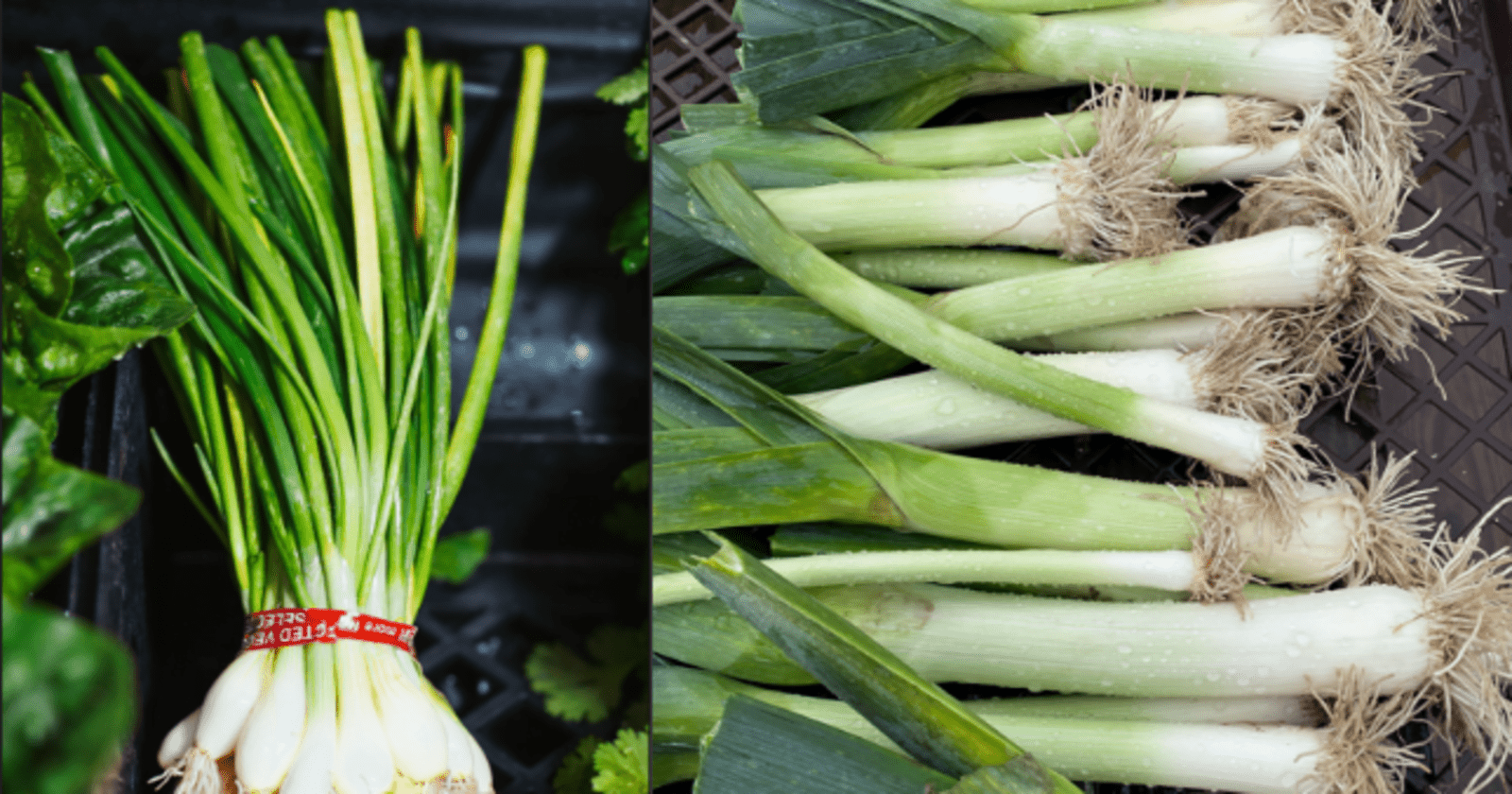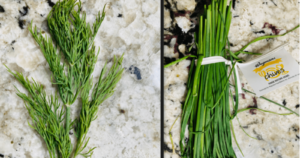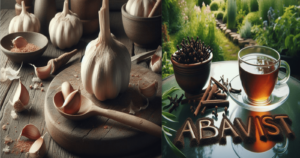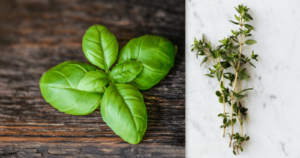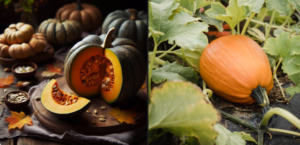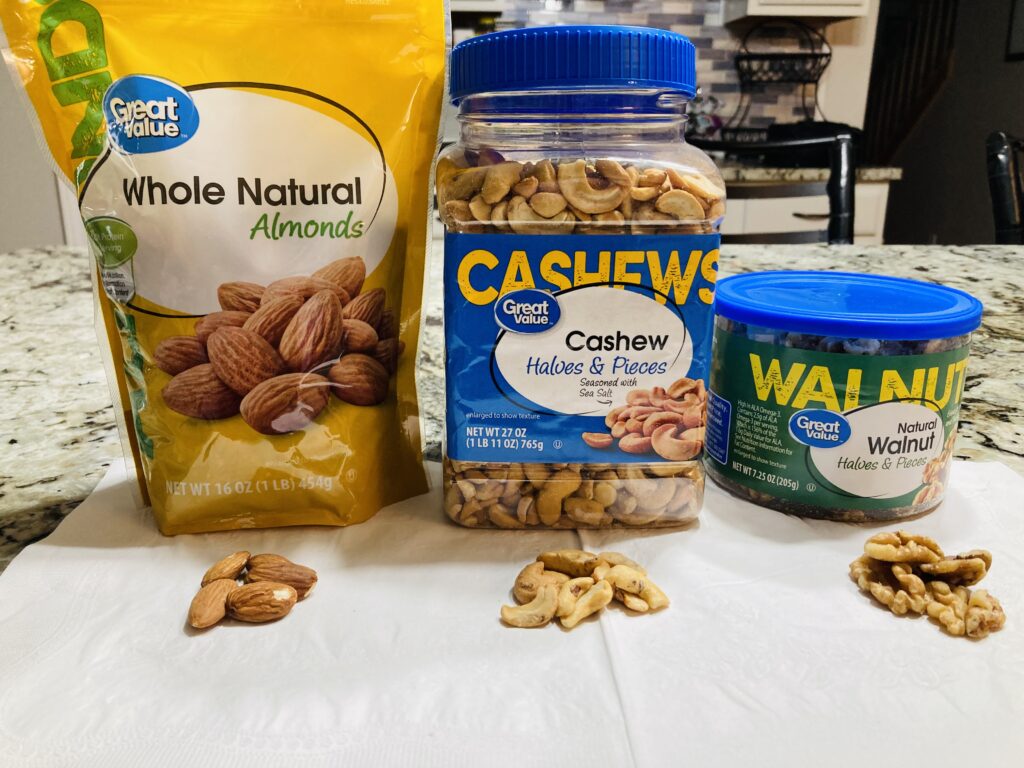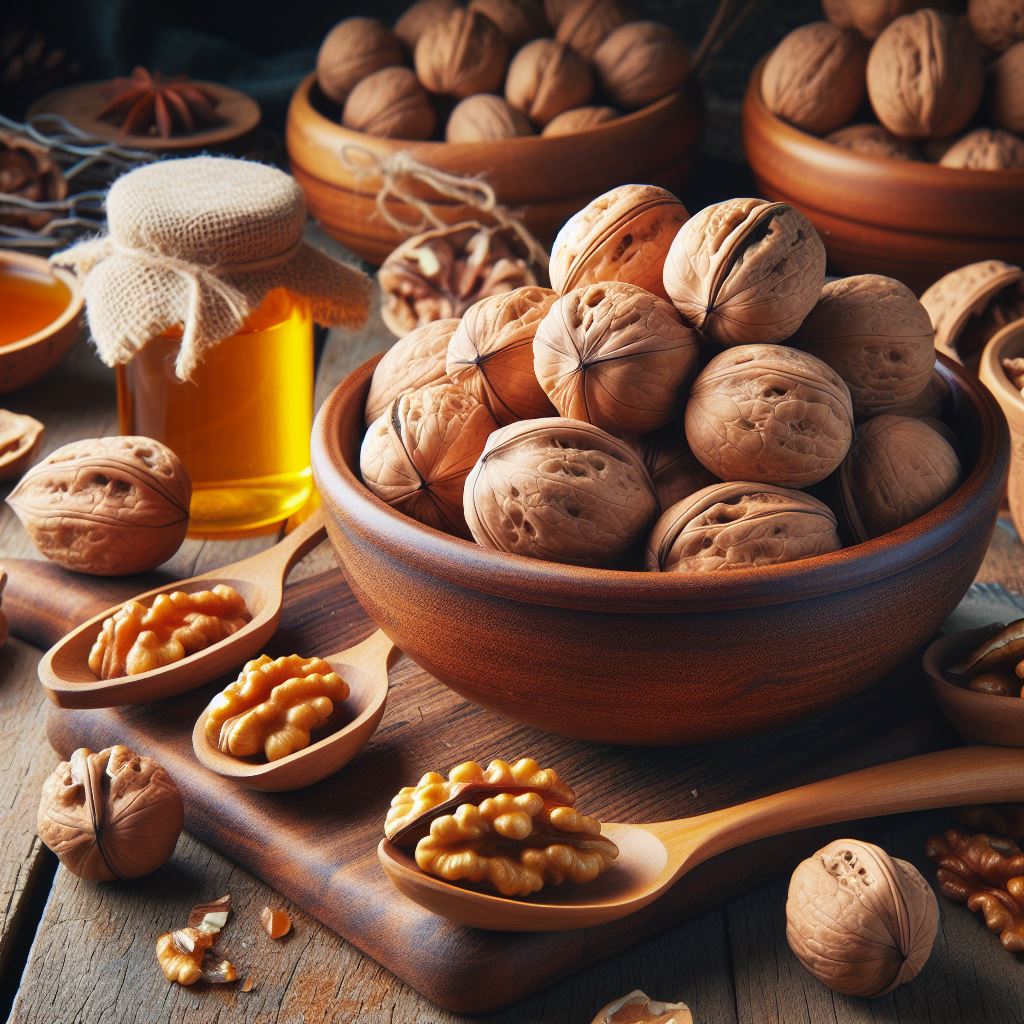Spring onions have long, thin green stalks with small white bulbs at the base compare to leeks which have a cylindrical shape with long, thick, white stalks and broad leaves. Both are members of the Allium family, which also includes garlic, onions, and chives. While they share some similarities, they have distinct differences in appearance, flavor, and culinary uses.
Leeks and spring onions( also known as scallions) share a mild onion-like flavor, but they have some notable differences, Leeks have a milder, sweeter flavor compared to spring onions, which have a more pungent, sharp onion flavor, and are frequently used raw while leeks are often used as a vegetable in various dishes.

What is a Spring Onion?
Spring onions,( also known as green onions or scallions, even though they differ in age ) are vegetables that originate from various species within the Allium genus. Compared to most onions, scallions offer a milder flavor profile. They are closely related to garlic, shallots, leeks, chives, and Chinese onions.
Unlike many Allium species, scallions are distinctive in that they do not develop a fully formed bulb. Instead, they feature hollow, tubular green leaves that grow directly from the bulb. These leaves are edible and can be consumed both raw and cooked. Frequently, they are finely chopped and incorporated into various dishes, serving as flavorful garnishes.
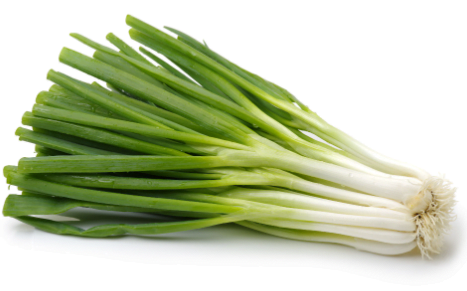
Spring Onion
Actually, the terminology can vary depending on the region, but generally, “spring onions,” “green onions,” and “scallions” are considered to be the same vegetable. They are typically harvested at an early stage of growth before a mature bulb forms. If left to grow longer, they may develop a slightly more pronounced bulb, but they are still considered to be the same type of onion. The distinction between these terms can be somewhat subjective and may differ based on local usage.
Nutritional Content Of Spring Onion
Spring onions are very low in calories and contain only around 5 calories per medium onion, or 32 calories per 100 grams (1).
- Calories per medium onion: Around 5
- Calories per 100 grams: 32
- Water content: 89%
- Fiber content: 2.6 grams (per 100 grams)
- Carbohydrates: 7.3 grams (per 100 grams)
- Protein: Tiny amounts (per 100 grams)
- Fat: Tiny amounts (per 100 grams)
- Micronutrients:
- Folate
- Vitamin K
- Vitamin C

Dishes with spring onion

Common Uses of Spring Onion
- Salads: Spring onions can be used in salads for an extra crunch and mild onion flavor. They work well in both green salads and pasta salads.
- Garnish: They make an excellent garnish for a wide range of dishes, including soups, stews, omelets, and stir-fries. The bright green color provides a visually appealing contrast.
- Stir-fries: Spring onions are a staple in Asian cuisine, particularly in stir-fries. They can be used both as a vegetable and as a flavoring agent.
- Sauces and Dips: Finely chopped spring onions can be added to sauces, salsas, and dips to enhance the flavor profile.
- Omelets and Scrambled Eggs: Chopped spring onions add a nice crunch and flavor to omelets and scrambled eggs.
- Grilled or Roasted: Whole or halved spring onions can be grilled or roasted as a side dish or a topping for meats and vegetables.
- Pizza Toppings: Sliced spring onions can be used as a pizza topping, adding a mild onion flavor and vibrant color.
- Noodles and Rice Dishes: They are often used in Asian noodle and rice dishes for added flavor and texture.
- Sauces for Seafood: Spring onions are commonly used in sauces for seafood dishes, as they complement the flavors well.
- Garnish for Soups and Ramen: Sprinkle chopped spring onions on top of soups, especially Asian-style soups like miso soup or ramen, for an added burst of flavor.
- Dumplings and Dim Sum: They can be used as a filling or garnish for various types of dumplings and dim sum.
- Sandwiches and Wraps: Add sliced spring onions to sandwiches or wraps for an extra layer of crunch and flavor.
- Mashed Potatoes: Mix finely chopped spring onions into mashed potatoes for a subtle onion flavor.
- Fritters and Pancakes: Spring onions can be incorporated into batter for fritters or savory pancakes.
- Marinades: They can be minced and included in marinades for meats, providing flavor and aroma.
- Homemade Salsas: Chop spring onions and mix them with tomatoes, cilantro, lime juice, and other ingredients to make a fresh salsa.
- Flavoring for Oils and Vinegars: Infuse oil or vinegar with spring onions for a unique flavor that can be used in dressings and marinades.
- Baked Goods: Spring onions can be added to savory baked goods like scones or biscuits for an interesting twist.
Remember to wash and trim the spring onions before using them, and feel free to use both the white and green parts, as they offer slightly different flavors and textures. Keep in mind that the intensity of the onion flavor varies depending on the size and age of the spring onion.
What is a Leek?
Leeks (Allium ampeloprasum var. porrum) are a type of vegetable that belong to the same family as onions, garlic, and shallots. They have a mild, onion-like flavor and a slightly sweet taste. Leeks are characterized by their long, slender stalks and a white-to-light green color. The darker green leaves at the top are usually tougher and are often discarded, while the tender white and light green parts are the most commonly used in cooking.
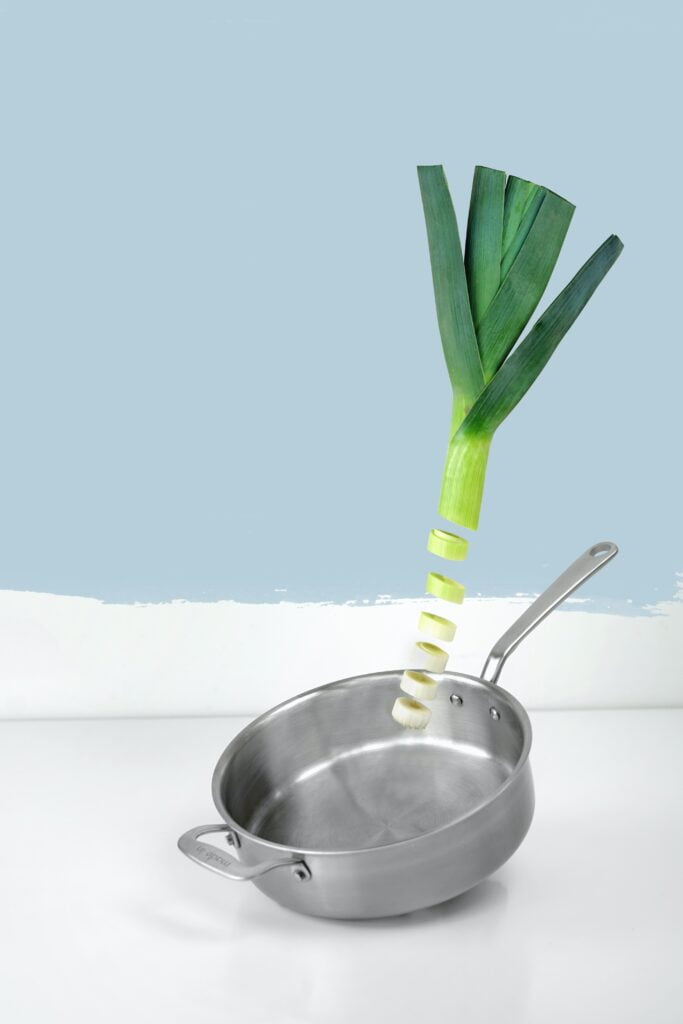
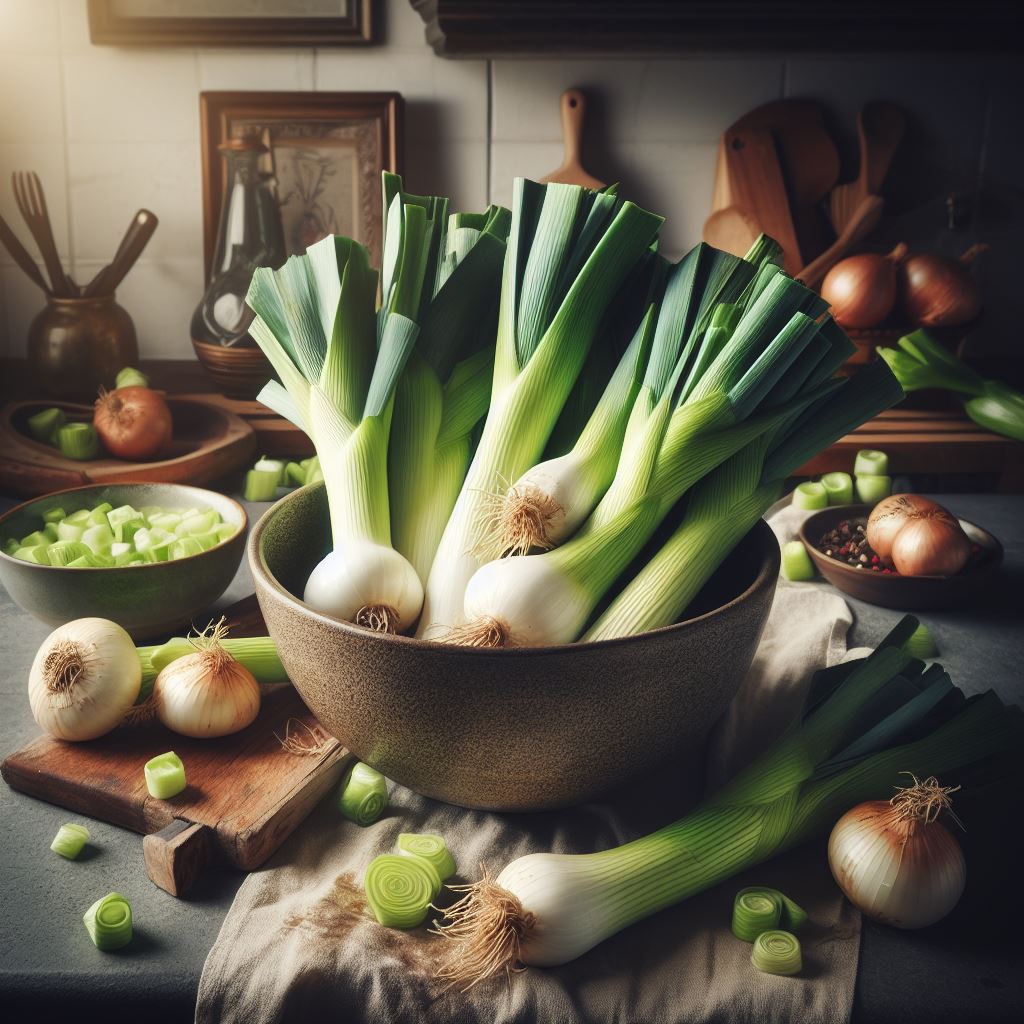
leek sliced
Leeks are versatile and can be used in a wide variety of dishes, such as soups, stews, salads, and casseroles. They are an excellent source of vitamins and minerals, particularly vitamin K, vitamin A, and folate. They are also low in calories and high in dietary fiber.
To prepare leeks, you’ll want to wash them thoroughly, as they tend to accumulate dirt and sand between the layers. You can slice them thinly or chop them, depending on your recipe.
Overall, leeks are a nutritious and flavorful addition to many dishes, providing a unique and delicate onion-like flavor to your meals.
Leeks resemble larger versions of scallions or green onions, boasting a similar tapered form and a gradient of pale green at the base to dark green at the top. However, it’s crucial to note that they are distinct from green onions and shouldn’t be used interchangeably. Although they share a botanical relationship, their culinary applications differ significantly.
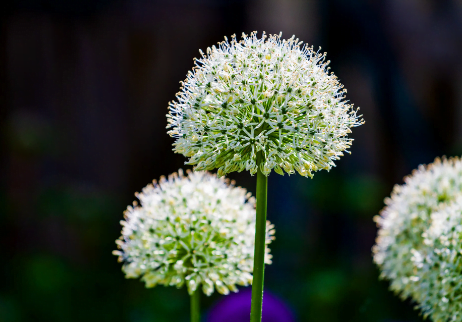
Leek Blossom
Green onions, with their delicate texture and flavor, are typically sliced and consumed raw. Leeks, on the other hand, possess a sturdier texture and are not commonly eaten in their raw state. When cooked, both green onions and leeks soften, but leeks require a bit more time to reach the desired tenderness.
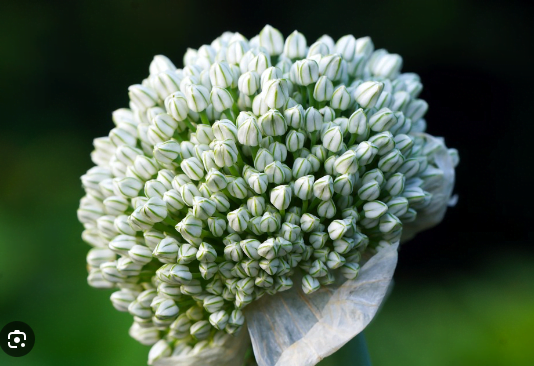
Flower of the Leek
Common uses for leeks
- Soups and Stews: Leeks are a key ingredient in many classic soups such as Potato Leek Soup. They add a mild, onion-like flavor that complements other ingredients.
- Quiches and Frittatas: Sautéed leeks can be added to quiches or frittatas for an extra layer of flavor and texture.
- Salads: You can use the tender white and light green parts of leeks in salads. They can be sliced thinly and used raw or blanched for a milder flavor.
- Side Dishes: Leeks can be braised, roasted, or grilled as a side dish. They pair well with other vegetables like carrots, potatoes, and Brussels sprouts.
- Pasta Dishes: Sautéed leeks can be a delicious addition to pasta dishes. They add a subtle sweetness and depth of flavor.
- Sauces and Gravies: Cooked and pureed leeks can be used as a base for sauces, gravies, or even as a flavoring component in stocks and broths.
- Tarts and Pies: Leeks can be used as a filling for savory tarts and pies, either on their own or combined with other vegetables and cheeses.
- Omelets and Quiches: Sautéed leeks can be folded into omelets or incorporated into quiche fillings for added flavor.
- Gratins: Layer sliced leeks with other vegetables like potatoes or cauliflower in a gratin dish, add cream and cheese, and bake for a delicious side dish.
- Vegetable Stir-Fries: Include sliced leeks in vegetable stir-fries for a unique and flavorful twist.
- Garnish: Fried or thinly sliced raw leeks can be used as a garnish for various dishes, adding both flavor and visual appeal.
- Sauces for Seafood: Leeks can be used as a component in sauces for fish and seafood dishes. They pair particularly well with white fish.
Remember to wash leeks thoroughly, as they can sometimes harbor dirt in their layers. Cut off the roots and dark green tops, leaving the tender white and light green parts for cooking. Leeks have a milder flavor compared to onions, making them a versatile ingredient in a wide range of dishes.
Classic recipe for Potato Leek Soup, a popular and comforting dish:
Ingredients:
- 4 large leeks (about 3 cups), white and light green parts only, sliced and thoroughly washed
- 4 medium potatoes (about 1.5 lbs), peeled and diced
- 4 cups vegetable or chicken broth
- 2 cups water
- 2 tablespoons butter
- 1/2 cup heavy cream (optional)
- Salt and pepper to taste
- Chopped chives or parsley for garnish (optional)
Instructions:
- Prepare the Leeks:
- Trim off the dark green tops and roots of the leeks. Slice them in half lengthwise and then chop them into thin half-moons. Rinse the chopped leeks thoroughly under running water to remove any dirt or grit.
- Sauté the Leeks:
- In a large soup pot or Dutch oven, melt the butter over medium heat. Add the chopped leeks and cook for about 5-7 minutes, stirring occasionally, until they are softened and just starting to turn golden.
- Add Potatoes and Liquid:
- Add the diced potatoes to the pot and stir them in with the leeks. Pour in the vegetable or chicken broth and water. Bring the mixture to a gentle boil.
- Simmer:
- Reduce the heat to low, cover the pot, and let the soup simmer for about 20-25 minutes, or until the potatoes are completely tender.
- Blend the Soup:
- Using an immersion blender, carefully blend the soup until it’s smooth and creamy. If you don’t have an immersion blender, you can carefully transfer the soup to a blender in batches, blending until smooth, and then returning it to the pot.
- Season and Add Cream (if using):
- Season the soup with salt and pepper to taste. If you’d like a creamier texture, stir in the heavy cream at this stage.
- Reheat and Serve:
- If needed, gently reheat the soup over low heat. Be careful not to bring it to a boil once the cream has been added.
- Garnish (optional):
- Serve the soup hot, garnished with chopped chives or parsley if desired.
- Enjoy your homemade Potato Leek Soup! It’s delicious on its own or with a slice of crusty bread.

Potatoe, leek soup serve with bread.
Differences between Spring Onion and Leeks:
| SPRING ONION | LEEKS |
| Appearance: long, thin green stalks with small white bulbs at the base. The entire plant, from the white bulb to the green tops, is edible. | Appearance: Leeks are cylindrical with thick white stalks and dark green leaves. The white and light green parts are used in cooking, while the dark green leaves are often discarded or used for flavoring stocks. |
| Flavor: Milder, fresher, and sweeter flavor compared to mature onions. The green tops have a slightly milder taste than the white bulbs. | Flavor: Leeks have a mild, onion-like flavor, but it is milder and more subtle compared to regular onions. |
| Culinary Uses: Leeks are used raw in salads, as a garnish, or topping, and can be cooked in stir-fries, soups, or as a flavoring agent. | Culinary Uses: Leeks are versatile, often sautéed for soups, stews, quiches, and casseroles, and can also be grilled, roasted, or used in dishes like potato leek soup. |
| Availability: They are available year-round, but are most abundant in the spring and early summer. | Availability: They are also available year-round, but they are at their peak during the fall and winter months. |
| Growing Conditions: Grown as an annual and have a shorter growing season. They are easy to grow and can be cultivated in a wide range of climates. | Growing Conditions: Leeks are biennial but typically grown as annuals for cooking. They need a long growing season and are often started indoors before transplanting. |
| Size: Smaller and more slender compared to leeks | Size: Leeks are larger and have a more substantial, cylindrical shape |
| Recipes: They are commonly used in dishes like salads, stir-fries, and as a garnish for various dishes. | Recipes: Common recipes include potato leek soup, leek and potato gratin, quiches, and various savory pies |
| Bulb: do not develop a fully formed bulb. | Bulb: Leeks develop a broad, succulent stem rather than a large bulb like an onion |
| Cultivation: Spring onions are usually planted at the end of summer so that they grow over winter, ready for harvesting in the spring. | Cultivation: Leeks are best sown in March or April, either in a seedbed for later transplanting or directly in their permanent location. |
Remember, while they have their distinct characteristics, in some recipes, they can be used interchangeably, although there will be some flavor variation. It’s always a good idea to consider the specific dish you’re preparing and how the flavor and texture of each ingredient will contribute to the final result.
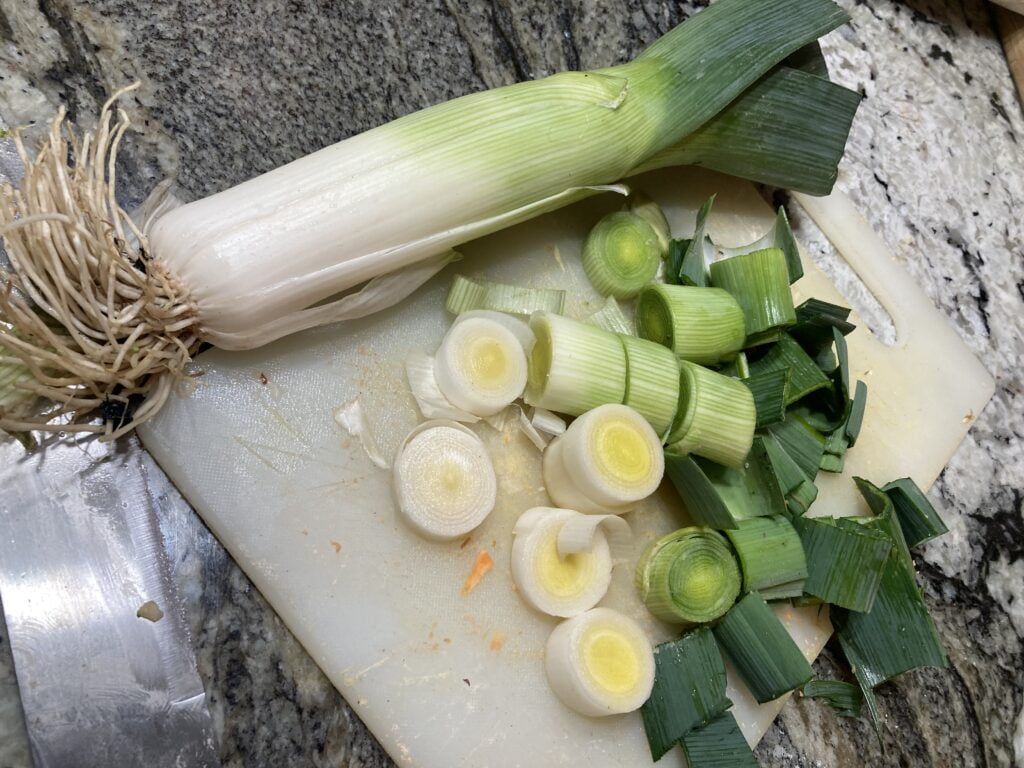

Health Benefits of Leeks
- Rich Source of Flavonoids, Especially Kaempferol:
- Flavonoids are potent antioxidants with potential health benefits, including anti-inflammatory, anti-diabetic, and anticancer properties.
- Cancer Risk Reduction:
- Consumption of allium family plants (including leeks) may be linked to a lower risk of certain cancers, such as prostate, stomach, colon, and esophageal cancer.
- Antioxidant Properties:
- Antioxidants in allium vegetables can help repair damaged DNA, potentially contributing to overall health.
- Potential Colorectal Cancer Protection:
- Studies have suggested a reduced risk of colorectal cancer associated with the consumption of vegetables from the allium family.
- Expectorants: Onions are expectorants and help the flow of mucus. Onions are loaded with anti-inflammatory properties. Studies have shown that these properties can reduce the constriction of the airways in an asthma attack. Use cooked onions, baked, in soup and stews as raw onions are generally too irritating.
How to store Spring Onion and leek
Storing Spring Onions:
- Refrigeration: Wrap spring onions in a damp paper towel, place them in a plastic bag, and store them in the crisper drawer of the refrigerator. They can last up to a week.
- Freezing: Chop the onions, blanch them briefly in boiling water, then freeze them in an airtight container or freezer bag. Use within a few months.
Storing Leeks:
- Refrigeration: Wrap leeks in a paper towel and place them in a plastic bag in the crisper drawer. They can last for 1-2 weeks.
- Freezing: Clean, chop, and blanch leeks for 2-3 minutes. Drain and freeze them in an airtight container or freezer bag. They can be stored for up to 3 months.
Best way to store spring onion and leek
Best Way to Store Spring Onions:
- Refrigeration: Place spring onions upright in a glass with a little water, cover loosely with a plastic bag, and store in the refrigerator. This method keeps them fresh for up to two weeks.
Best Way to Store Leeks:
- Refrigeration: Wrap unwashed leeks in a damp paper towel, then place them in a perforated plastic bag or loosely in the crisper drawer. They can stay fresh for up to two weeks.
Resources
Book : Food Cures Publications International ,Ltd. Morton Grove ,IL 60053
